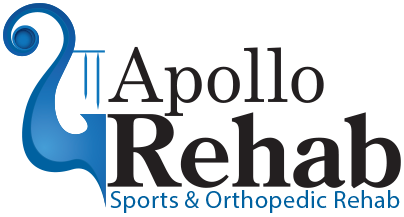Apollo Rehab specializes in orthopedics, manual therapy, sports physical therapy, and neurological rehabilitation. Individualized care is provided with each patient in order to establish a treatment program that addresses their individual goals and needs.
Apollo Rehab ensures to use a vast variety of treatment options such as therapeutic exercise, manual techniques, modalities, Graston, kinesio-taping and patient education, to ensure optimal recovery and allow a proper return to prior level of function.
With over ten years of working in the health field Apollo Rehab has been blessed to have established great relationships with orthopedic physicians, spine specialist, chiropractors, pain management physicians where a constant communication can be maintained.
Orthopedics
Orthopedic physical therapists diagnose, manage, and treat disorders and injuries of the musculoskeletal system including rehabilitation after orthopedic surgery. This speciality of physical therapy is most often found in the out-patient clinical setting.
Orthopedic therapists are trained in the treatment of injuries such as neck and back pain, or shoulder tendinitis, can be treated with orthopedic rehabilitation, along with carpal tunnel syndrome, knee and ankle sprains and hip pains. Orthopedic rehabilitation is often needed post surgery to aid in the healing process for patients who have had a spinal fusion, total hip or knee replacement, and ankle reconstructions. Other conditions that may require surgery in conjunction with orthopedic rehabilitation are complete shoulder replacements, laminectomies, rotator cuff repairs, and meniscectomies.
Manual Therapy
The term “manual therapy” refers to hands-on treatment of muscles, tendons, ligaments, and joints. Human touch is an essential ingredient in our treatment philosophy and approach, and for good reason. Patients respond positively to hands-on work when combined with exercise and education. This leads to faster recovery and less out-of-pocket expenses.
Manual therapy encompasses a broad group of sophisticated techniques performed by hand and by uniquely trained physical therapists. These may include mobilizations or manipulations of soft tissue and skeletal joints. Manual therapy techniques aim to decrease pain and increase function. Most manual therapy training programs in the United States are four-year, post-graduate programs that emphasize clinical experiences, classroom education, and extensive exams.
Sports Physical Therapy
Physical therapists can be involved in the care and wellbeing of athletes including recreational, semi-professional (paid) and professional (full-time employment) participants. This area of practice encompasses complete athletic injury management under 5 main categories:
Acute care – Assessment and diagnosis of an initial injury;
Treatment – Application of specialist advice and techniques to encourage healing;
Rehabilitation – Progressive management for full return to sport;
Prevention – Identification and address of deficiencies known to directly result in, or act as precursors to injury
Education – Sharing of specialist knowledge to individual athletes, teams or clubs to assist in prevention or management of injury
What is dry needling?
– Dry needling is a therapeutic technique that involves inserting thin needles into trigger points or tight muscles that cause pain and discomfort.
– Trigger points often develop due to overuse, injury, stress, or poor posture.
Common effects of trigger points include:
- Localized pain
- Referred pain
- Range of motion deficits
- Muscle weakness
- Autonomic symptoms
- Sleep disturbances
– By targeting and releasing trigger points, dry needling aims to alleviate pain and promote healing.
– Dry needling can be used to treat muscles, ligaments, tendons, subcutaneous fascia, scar tissue, peripheral nerves, and neurovascular bundles.
The Theory
– Dry needling targets trigger points, which are hyperirritable spots within muscles, that cause pain and restrict movement.
– When the needle is inserted into trigger points it creates a micro-injury and stimulates a local twitch response. The muscle fibers contract briefly and this helps release tension, increase blood flow, and promote healing.
Neurological Therapy
Neurological physical therapy is a form of therapy that is focused on working with people who have a type of neurological disorder or disease. The types of neurological disabilities approached by this form of physical therapy might include ALS, Alzheimer’s disease, cerebral palsy, Parkinson’s disease, multiple sclerosis, stroke, or spinal cord injuries. Common types of impairments associated with neurologic conditions can include balance, vision, ambulation, movement, activities of daily living, speech, or loss of functional independence.
Fascial Stretch Therapy
Stretching offers many health benefits, including increases in: flexibility, release of endorphins, improved blood flow, and energy levels. Stretching also helps to reduce post-workout soreness, recovery time, and decreases risk of injury.
Stretching is a form of physical activity that involves deliberately stretching a muscle, tendon, and or connective tissue with the purpose of improving muscle elasticity, range of motion, and flexibility. Many different stretching techniques exist: several of the most common ones are ballistic, dynamic, static, Proprioceptive Neuromuscular Facilitation (PNF), and low load long duration stretching.
Lymphedema treatment typically includes a combination of physical therapy and garments or bandaging that moves fluid from areas affected by lymphedema. If you have physical therapy for lymphedema, it’s very important to use garments or bandaging after therapy to maintain the treatment’s effect.


